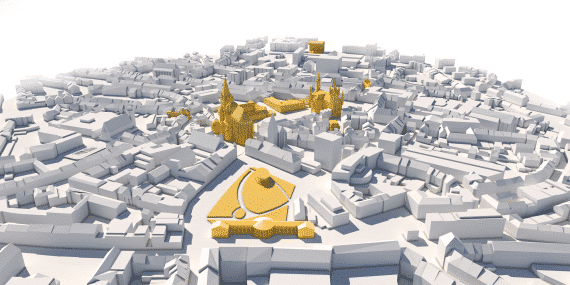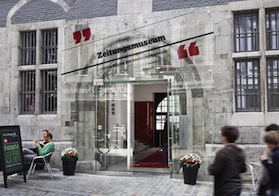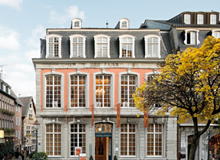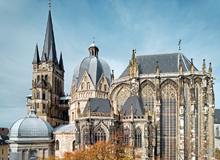Museum
Route Charlemagne
From Town Hall to “Elisenbrunnen”
The Route Charlemagne connects important sites in the city, including the cathedral and town hall, Grashaus (Aachen’s former town hall) and the Elisenbrunnen hot springs, into one big walk through history. The Centre Charlemagne, the central station of the Route, is located between the cathedral and the town hall, at the very centre of the city. All other stations on the Route Charlemagne are within walking distance.
More on www.route-charlemagne.eu
Why “Charlemagne”?
Aachen without Charlemagne? Unthinkable. For nearly two decades, Aachen was the centre of the Carolingian empire. Charlemagne turned the Palace into a sumptuous imperial residence. He also built St Mary’s Church, the core building of what now is the Cathedral. When he was crowned emperor in Rome on Christmas 800, Charlemagne, as the powerful ruler of the Frankian realm, once more reinstated the Western Roman Empire. Charlemagne is the mythical forefather of Europe and the founding father of two nations: France and Germany.
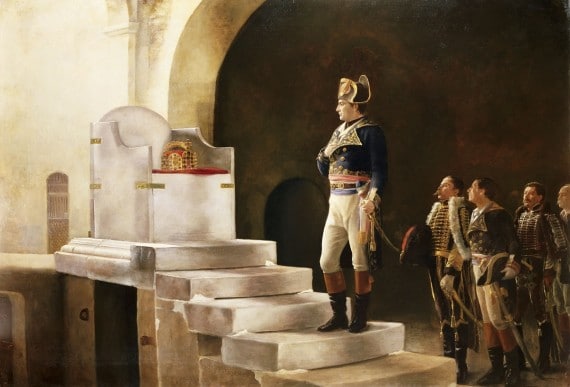
On the occasion of his visit to Aachen in 1804, Napoleon styles himself as the successor of Charlemagne in front of the throne at St Mary’s Church. The imperial crown was added to the scene by the painter. Oil painting by Henri Paul Motte (1898). © Fine Art Photographic Library/CORBIS
Even after his death in 814, Charlemagne continued to play an important role in Aachen’s history: Legends around the emperor’s grave and the marble throne at St Mary’s Church made the city the venue of choice for coronations throughout the Middle Ages. Canonisation of Charlemagne on 29th December 1165 was the decisive impulse triggering the veneration of Charlemagne, the ‘Legend of Charlemagne‘. Charlemagne was declared the patron of St Mary’s Church as well as the up-and-coming city of Aachen as a whole. Emperor Frederick Barbarossa granted the city of Aachen comprehensive privileges only a few days after Charlemagne’s canonisation, laying the founding stone for Aachen to become a flourishing imperial city. In the Modern Era, the Legend of Charlemagne was exploited for political purposes. Napoleon and William II deliberately styled themselves as successors of the Carolingian emperor. “Je suis Charlemagne – I am Charlemagne,” Napoleon once said. Since 1950, the International Charlemagne Prize is awarded annually at the Coronation Hall (Krönungssaal) at Aachen town hall in honour of services to the European cause.
The Route Charlemagne in 60 seconds:
